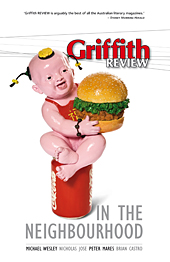EVERY PICTURE TELLS a story. Sometimes what happens around a picture can be as telling as the picture itself. Without having to change in any way, the picture finds itself in such interesting times that its meaning and value alter. That is what happened to some art works seen for the first time in an exhibition in Beijing in February 1989. Let me tell you their story, through to the present, now that the Chinese art market has become red-hot. It’s an intriguing illustration of anomalies and adjustments across the board in China’s unparalleled social transformation.
There was excitement about the plan to hold a large-scale exhibition of new art from around the country in the late 1980s, and a lot of last-minute activity as word spread through art schools and artist groups. A structure was improvised to manage the aspirations and logistics of an event that had a strong cultural/political agenda yet needed to work within existing, never quite spoken constraints. The vision was to place the creativity of a new generation at the centre of the nation by bringing the best contemporary work into the official space of the capital’s National Art Gallery. It would be a defiant, exuberant and revelatory show. The modus operandi was complex, unwieldily collective and hierarchical at the same time, as three men – brilliant scholars, passionate advocates, adept critics – occupied the top of a curatorial tree. This arrangement reflected an artistic culture organised around a pyramid of state-run art schools and official agencies, though there was theoretically room for outsiders. As the final selection approached, more and more artists arrived in Beijing with their work to jostle and lobby for inclusion. The curators had pressures and compromises of their own too, involving political and cultural indebtedness, recognition of status, friends and favourites. There were the egos of artists to manage, and the disruptive will of the crowd. Yet even here, the Central Academy of Fine Arts in Beijing and the rival Zhejiang Art Academy in Hangzhou, the two schools at the apex of the national art hierarchy, held the high ground and few artists who were not officially trained got in. This was less outsider art than change from within.

Already a subscriber? Sign in here
If you are an educator or student wishing to access content for study purposes please contact us at griffithreview@griffith.edu.au





